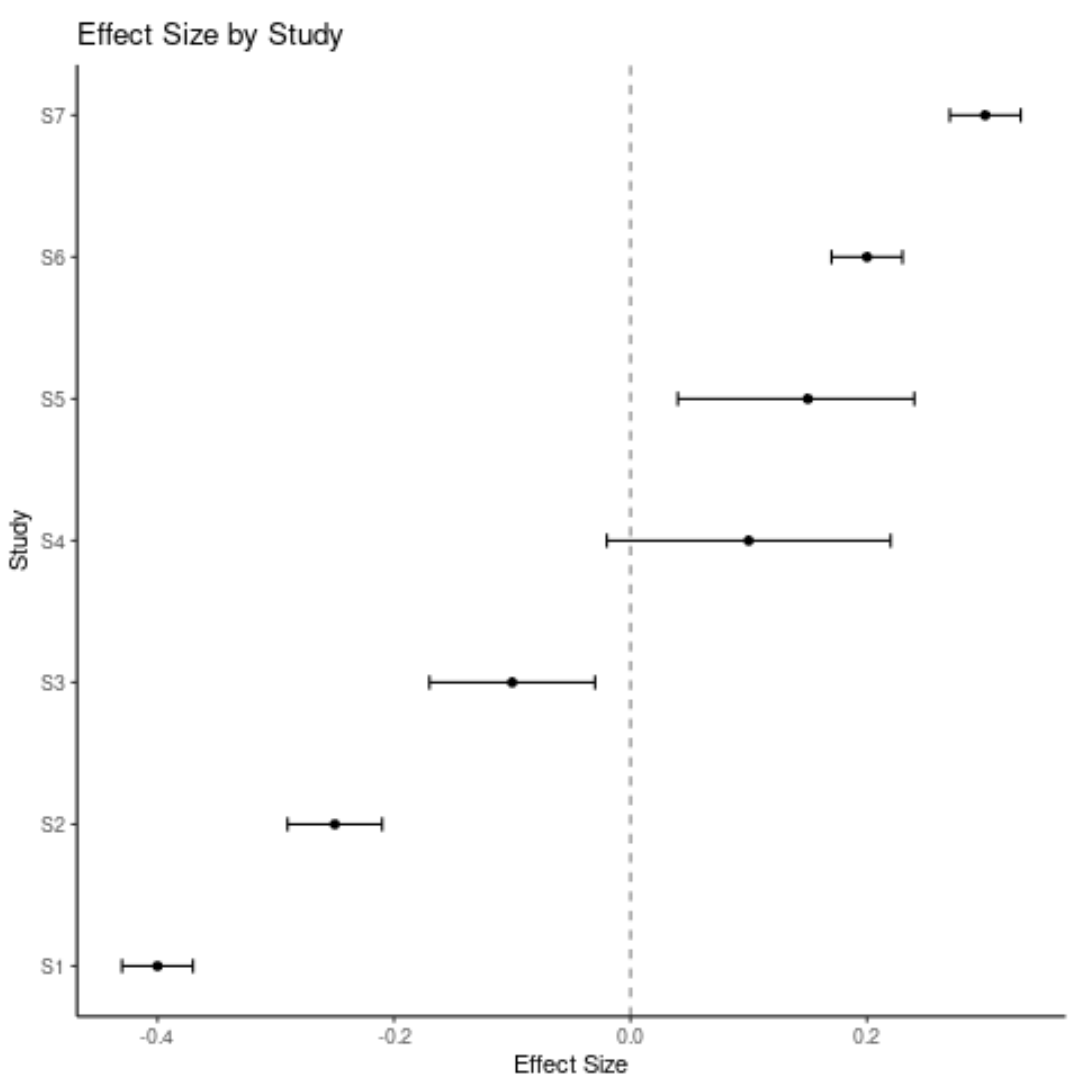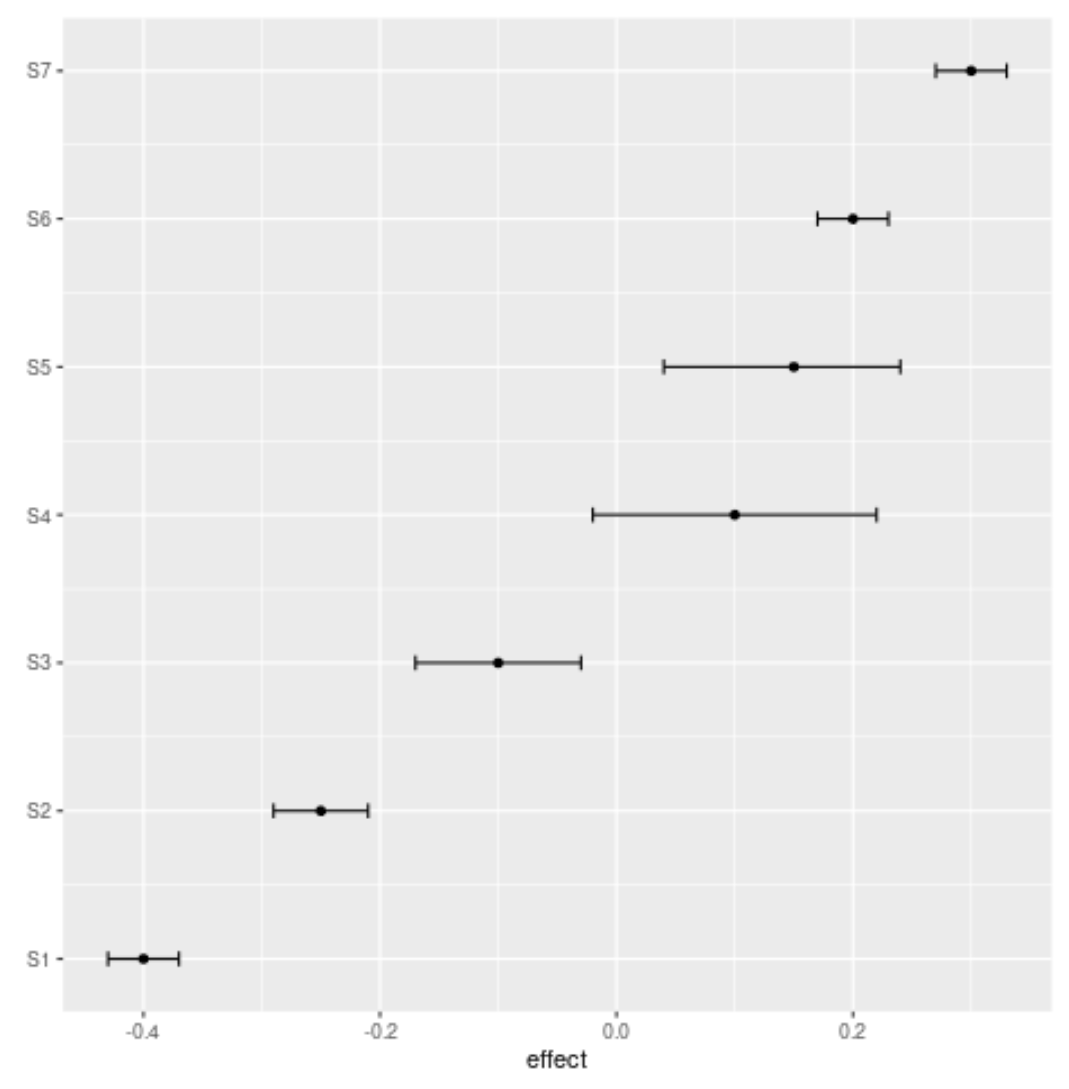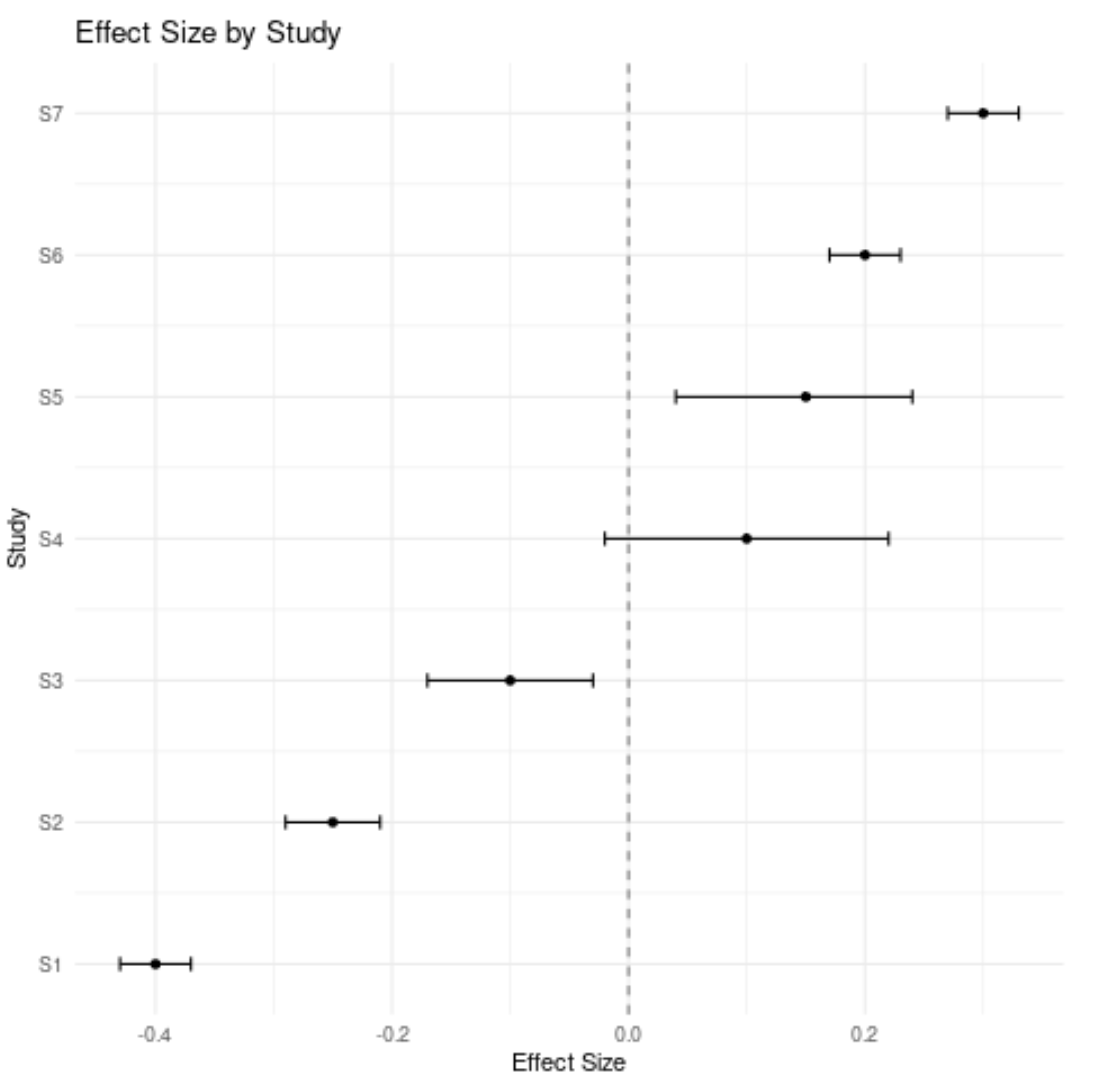R でフォレスト プロットを作成する方法
フォレスト プロット(「ブロボグラム」とも呼ばれます) は、複数の研究の結果を 1 つのプロットで視覚化するメタ分析で使用されます。

お茶
このタイプのプロットは、複数のスタディの結果を同時に表示する便利な方法を提供します。
次の例は、R でフォレスト プロットを作成する方法を示しています。
例: R の森林プロット
R でフォレスト プロットを作成するには、まず各研究の効果量 (またはその他の関心のある値) と信頼区間の上限と下限を含むデータ フレームを作成する必要があります。
#create data df <- data. frame (study=c('S1', 'S2', 'S3', 'S4', 'S5', 'S6', 'S7'), index=1:7, effect=c(-.4, -.25, -.1, .1, .15, .2, .3), lower=c(-.43, -.29, -.17, -.02, .04, .17, .27), upper=c(-.37, -.21, -.03, .22, .24, .23, .33)) #view data head(df) study index effect lower upper 1 S1 1 -0.40 -0.43 -0.37 2 S2 2 -0.25 -0.29 -0.21 3 S3 3 -0.10 -0.17 -0.03 4 S4 4 0.10 -0.02 0.22 5 S5 5 0.15 0.04 0.24 6 S6 6 0.20 0.17 0.23 7 S7 7 0.30 0.27 0.33
次に、ggplot2 データ視覚化パッケージの関数を使用して、次のフォレスト プロットを作成できます。
#load ggplot2 library (ggplot2) #create forest plot ggplot(data=df, aes (y=index, x=effect, xmin=lower, xmax=upper)) + geom_point() + geom_errorbarh(height= .1 ) + scale_y_continuous(name = "", breaks=1: nrow (df), labels=df$study)

X 軸は各研究の効果量を表示し、Y 軸は各研究の名前を表示します。
グラフ内の点は各研究の効果量を示し、エラーバーは信頼区間の限界を示します。
グラフの見栄えを良くするために、タイトルを追加したり、軸ラベルを変更したり、効果サイズ 0 の垂直線を追加したりすることもできることに注意してください。
#load ggplot2 library (ggplot2) #create forest plot ggplot(data=df, aes (y=index, x=effect, xmin=lower, xmax=upper)) + geom_point() + geom_errorbarh(height= .1 ) + scale_y_continuous(breaks=1: nrow (df), labels=df$study) + labs(title=' Effect Size by Study ', x=' Effect Size ', y = ' Study ') + geom_vline(xintercept=0, color=' black ', linetype=' dashed ', alpha= .5 ) + theme_minimal()

プロットのテーマを自由に変更して、好みの見た目にできます。たとえば、さらにクラシックな外観にするために、 theme_classic()を使用することもできます。
#load ggplot2 library (ggplot2) #create forest plot ggplot(data=df, aes (y=index, x=effect, xmin=lower, xmax=upper)) + geom_point() + geom_errorbarh(height= .1 ) + scale_y_continuous(breaks=1: nrow (df), labels=df$study) + labs(title=' Effect Size by Study ', x=' Effect Size ', y = ' Study ') + geom_vline(xintercept=0, color=' black ', linetype=' dashed ', alpha= .5 ) + theme_classic()
